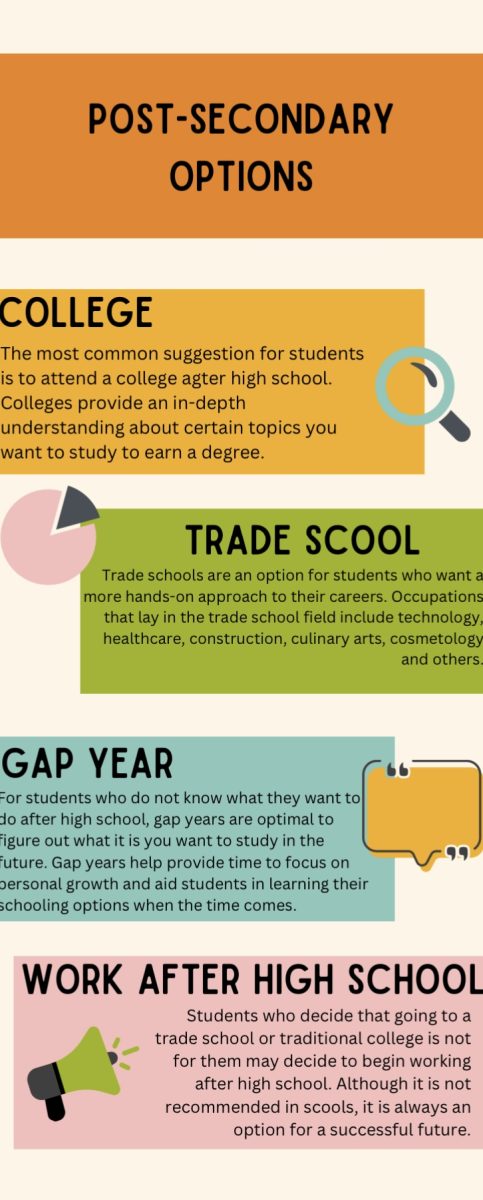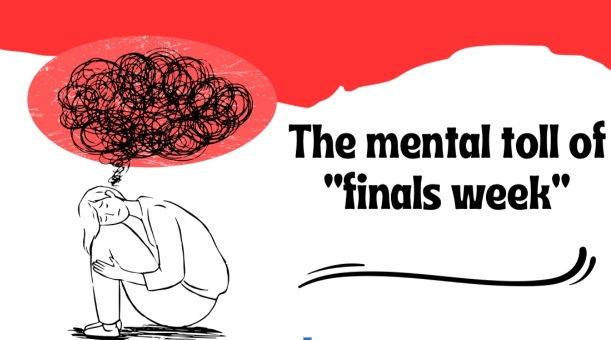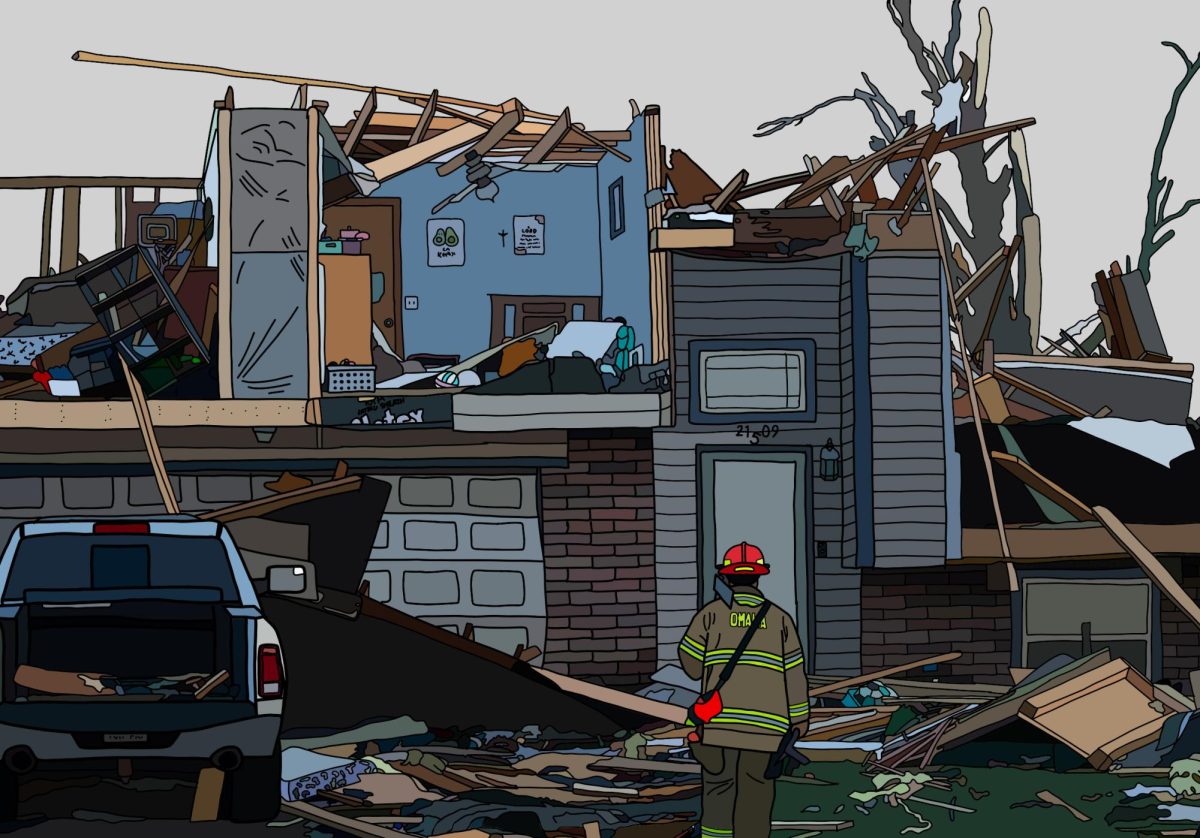In the vast field of post-secondary education, the journey from high school graduation to higher learning is different for everyone, offering a plethora of pathways for students to experiment. Each option, from traditional universities to trade schools and gap years, presents unique opportunities and challenges.
Two-year colleges and universities stand as post-secondary options that help perfect a student’s understanding of academic material, offering a wide array of disciplines and research opportunities for their future degree. An article by Metropolitan State University explains that a student may decide to go to college if they are looking to gain knowledge about a chosen field, begin networking with professionals or expand on skills. College graduates also have the advantage of having a much more flexible career path than others due to the degree in their hand.
However, the rising cost of tuition and student debt burdens cannot be overlooked. According to the College Board, the average annual tuition and fees for in-state students at public four-year institutions reached $10,560 for the 2022-2023 academic year, placing a significant financial strain on many families.
A big misconception is that trade schools and technical colleges are for students who didn’t get the best grades in school or lack intellectual ability to go to college. In reality, trade schools offer specialized training in trades and practical lifelong skills. Massachusetts Institute of Technology highlights the importance of vocational training in meeting the demands of the modern workforce. Trade education equips students with hands-on skills that are directly applicable to various industries, addressing the growing need for skilled workers in fields such as healthcare, construction and information technology.
Moreover, trade programs often have shorter completion times and lower tuition costs compared to traditional universities, making them a good option for those seeking a more hands-on approach to their careers.
For some students, a gap year—a period of time taken off between high school and college—is gaining attention as a post-secondary option. According to the American Gap Association, a gap year allows students to step outside their comfort zones, gain real-world experience, and clarify their academic and career goals. This is especially helpful for those who don’t have a career in mind after high school. Whether volunteering abroad, interning at a local organization or trying out a solo adventure, gap year experiences help young adults with their personal growth.
Concerns about academic momentum and potential delays in degree completion often deter students from pursuing this non-traditional path.
The plethora of post-secondary education options is as diverse as the individuals navigating it. Whether embarking on university education, honing practical skills through trade scool training, or doing your own journey of self-discovery during a gap year, each option offers a unique set of personal and professional development. To decide what to do, consider individual aspirations, interests, and circumstances, guided by informed decision-making and support from educators, mentors and family members.













